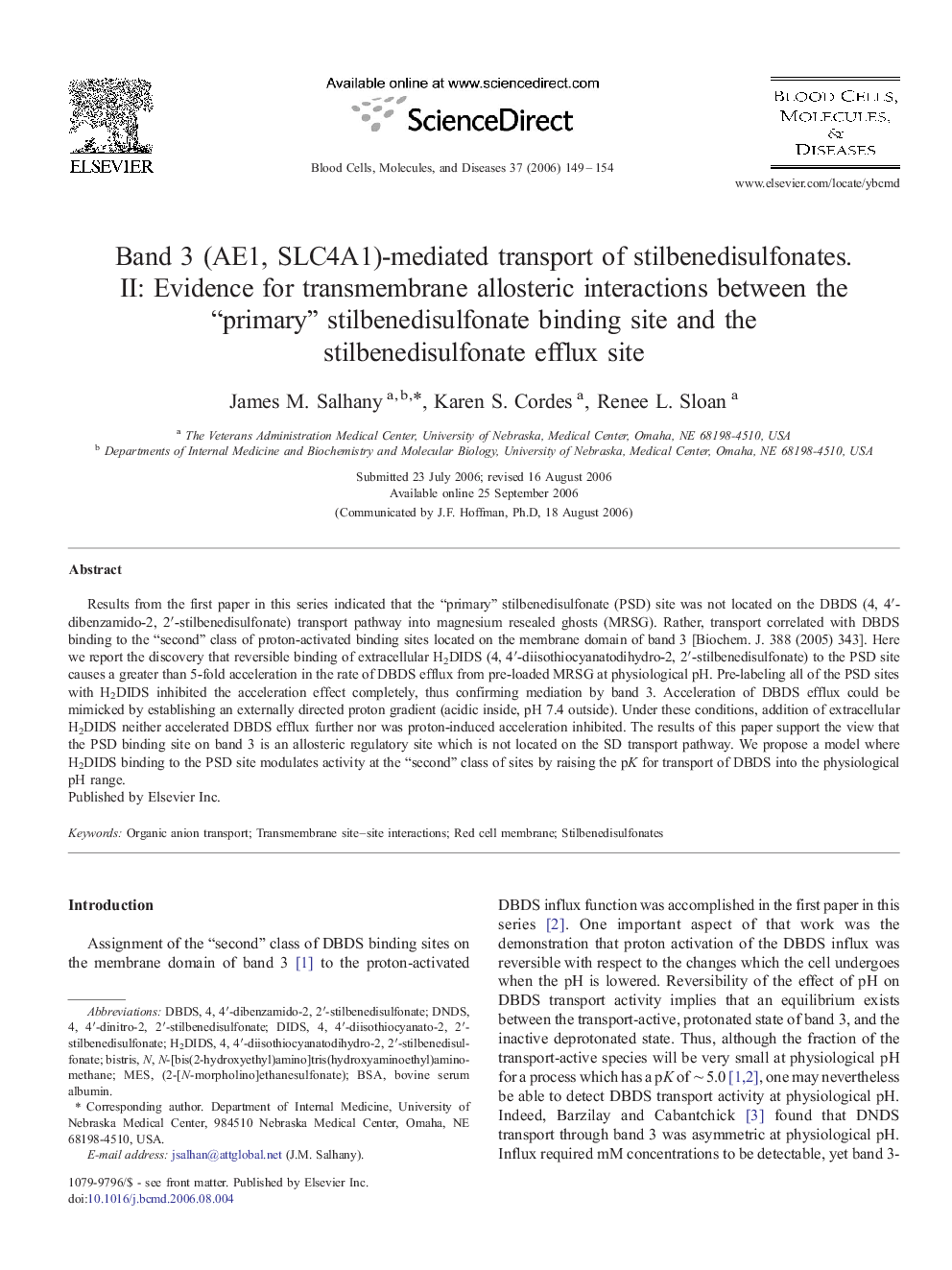| Article ID | Journal | Published Year | Pages | File Type |
|---|---|---|---|---|
| 2828331 | Blood Cells, Molecules, and Diseases | 2006 | 6 Pages |
Abstract
Results from the first paper in this series indicated that the “primary” stilbenedisulfonate (PSD) site was not located on the DBDS (4, 4â²-dibenzamido-2, 2â²-stilbenedisulfonate) transport pathway into magnesium resealed ghosts (MRSG). Rather, transport correlated with DBDS binding to the “second” class of proton-activated binding sites located on the membrane domain of band 3 [Biochem. J. 388 (2005) 343]. Here we report the discovery that reversible binding of extracellular H2DIDS (4, 4â²-diisothiocyanatodihydro-2, 2â²-stilbenedisulfonate) to the PSD site causes a greater than 5-fold acceleration in the rate of DBDS efflux from pre-loaded MRSG at physiological pH. Pre-labeling all of the PSD sites with H2DIDS inhibited the acceleration effect completely, thus confirming mediation by band 3. Acceleration of DBDS efflux could be mimicked by establishing an externally directed proton gradient (acidic inside, pH 7.4 outside). Under these conditions, addition of extracellular H2DIDS neither accelerated DBDS efflux further nor was proton-induced acceleration inhibited. The results of this paper support the view that the PSD binding site on band 3 is an allosteric regulatory site which is not located on the SD transport pathway. We propose a model where H2DIDS binding to the PSD site modulates activity at the “second” class of sites by raising the pK for transport of DBDS into the physiological pH range.
Keywords
Related Topics
Life Sciences
Biochemistry, Genetics and Molecular Biology
Molecular Biology
Authors
James M. Salhany, Karen S. Cordes, Renee L. Sloan,
